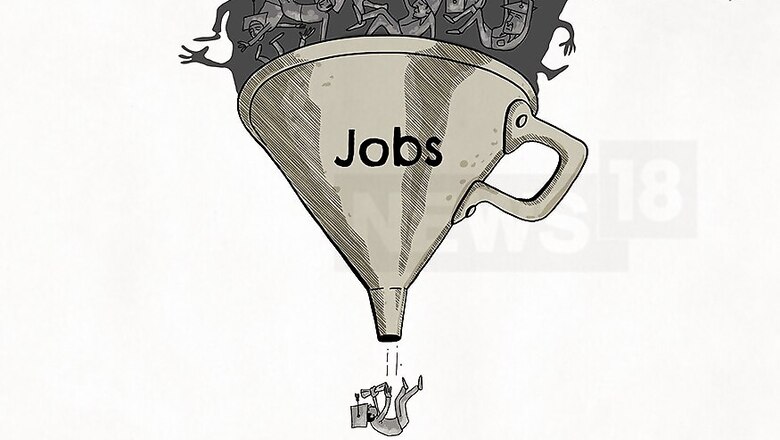
views
New Delhi: The new government wants a $5 trillion economy by 2024. For this, the Union Budgets need a strategy to achieve around 8 per cent annual growth.
A critical component will be creating 80-90 lakh new jobs annually, to accommodate not just additions to our workforce, but also their aspirations.
The answer lies in raising our productivity, our capability and capacity to generate jobs with wages that meet these modern aspirations.
The Union Budget can set a clear target and roadmap towards improving productivity by measures that a) create a conducive atmosphere for formalisation, both enterprises and jobs, and b) enhance workforce quality.
Here are the five ways Budget 2019 can help in boosting job growth in India:
1. Small units are disproportionately burdened by heavy compliance, having to use scarce resources to deal with 60,000 possible compliances and at least 3000 filings annually. The GST template has shown the way to a new definition of compliance digitisation – instead of uploading documents to a government website with passwords, the process uses an API architecture that allows straight-through-processing of filings from external systems.
This architecture should be extended to other departments especially labour. There should be specific budget allocations for implementing a paperless, cashless and presence-less interface between government and enterprises/employees that will significantly reduce the compliance burden.
2. E-assessments, as in Income Tax, should be initiated in all departments, releasing the stress of dealing with inspections and inspectors. This will significantly raise MSME productivity, giving them the ability and incentive to grow, creating jobs with higher wages.
3. As part of reducing the compliance burden, the process initiated by the AGILE form introduced by Ministry of Corporate Affairs recently should be extended across departments. The single form integrated six departments at the backend, plugging a new company and its employees directly into the formal system by registering simultaneously with GST, ESIC and EPFO.
This has to be taken further - India needs a Universal Enterprise Number to reduce the pain in starting and operating a business. Currently, an enterprise has to register for more than two dozen numbers, with different government departments. One single number will ease the burden of paperwork for companies and make tracking compliance easier for the government.
4. Statutory deductions can currently eat up to 40 per cent of gross wages for employees with monthly wages up to Rs 25,000. This creates a disincentive for both employers and employees to formalise jobs at the lower end of wages, where the net take-home salary is critical.
Contributions by low-wage employees could either be made optional, or subsidised. The PMRPY (Pradhan Mantri Rojgar Protsahan Yojana) scheme for partial reimbursement to employers for incremental low wage employees has worked well so far and should be extended for three years.
5. The fastest way to fix the problem of skilling our workforce is through apprenticeships. However, the government’s capacity to subsidise requisite numbers is woefully inadequate. We need 15 million apprentices for an economy our size. Shreyas, India’s biggest skilling programme introduced this year, has capacity for 500,000 annually.
Rather than subsidies, we need an ecosystem that encourages apprenticeships e.g. an exclusive job portal that matches apprentices to industry, companies to use CSR for skilling and training, more degree-linked apprenticeships by approving skill universities etc.
All said and done, the Budget is the government’s annual accounting statement and India’s jobs challenge will not be resolved in a year. Yet, by unclogging the compliance pipeline, the budgetary exercise can make a significant difference, changing the way India works and meeting its aspirations.




















Comments
0 comment